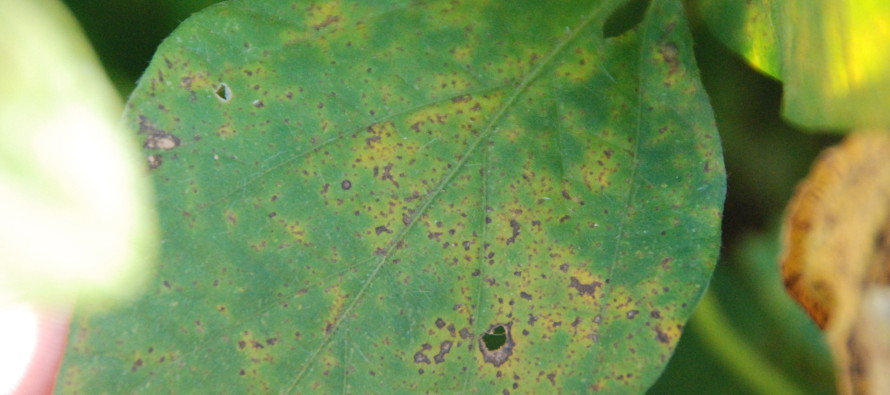Are Late-Season Soybean Rust Observations Important?

Related Articles
- 2010 Soybean And Corn Variety Trial Data 3
- Rice Variety Trial Results For 2010, Plus Rice Research Report 0
- Evaluation of Peanut Prescription Rx Program in Mississippi 0
Latest Tweets
Over the years I have received numerous questions regarding finding soybean rust when the soybean crop is reaching advanced growth stages (≈R6.5 or R7+) throughout much of the state. Historically, soybean rust observations have been a late-season occurrence. Since 2005, the majority of the soybean rust observations in MS have occurred between August and November (see Figure). In fact, 93% of the soybean rust observations have been made in that four month period. Nationally, over the same time period, 74% of the rust observations have occurred in the same four month period. September observations are more common in MS, while nationally and the greatest percentage of soybean rust observations have been made in October (35.6%).
Soybean rust has been observed on a national basis in every month. However, observations early in the year, in January and February, have not happened every year. Observations of soybean rust in January generally occur in Alabama, Florida, Louisiana and Texas. In the 12 years that rust has been observed in the U.S., dating back to 2004, soybean rust has been observed in January in nine of those years. In general, observations during January and February occur on kudzu (an additional host for soybean rust); however, in some rare instances soybean rust has been observed on soybean in the early winter months when plants have been observed in protected locations or were late-planted for seed production such as has been in the case in the Rio Grande Valley of Texas. Observations as early as January have only occurred in Mississippi in two years, 2008 (kudzu; Bolivar County) and 2014 (soybean; Washington County). In both cases, the rust that was observed was in extremely protected locations and once the next hard freeze occurred the green plant material was gone and rust was no longer observed. In fact, in both cases soybean rust was gone at both locations within seven days.

Soybean rust symptoms as observed on the upper leaf surface. Keep in mind the best diagnostic feature is on the underside of the leaf.
Even though the majority of the soybean rust observations have occurred during advanced soybean growth stages (R6-R8) the observations are important because the information could ultimately, one day, help create a predictive disease model. Rust inoculum can be tracked back to a specific point source, or location where the disease was observed earlier in the season, based on the prevailing wind patterns. But, since the initial observations of soybean rust in 2004, doing a future track of soybean rust has been difficult since it is a challenge to determine a) the amount of inoculum that leaves a point source, b) whether or not spores of the fungus survive the “journey” to a new location, and c) what the environment will do at the location where inoculum/spores land. Based on observing the predictive soybean rust model from the 2015 season it appears the majority of the soybean rust observations that have occurred over the past several weeks in northeast MS appear to be the result of inoculum that reached northeast MS during the July 4 weekend. In most cases limited rainfall occurred in northeast MS since early July. However, the environment encountered between July and September, in most cases hot and dry with some limited rain showers increased the incidence of soybean rust at some locations (e.g., Falkner, Verona), but kept the incidence of soybean rust low at other locations (e.g., Brooksville, Starkville). Moreover, determining the extent of the disease in the fall is important to determine how widespread the inoculum was throughout MS as well as monitor for the presence of the disease on hosts that could survive the winter (kudzu) if freezing temperatures do not occur in the fall/winter.





Let me tell You a sad story ! There are no comments yet, but You can be first one to comment this article.
Write a comment